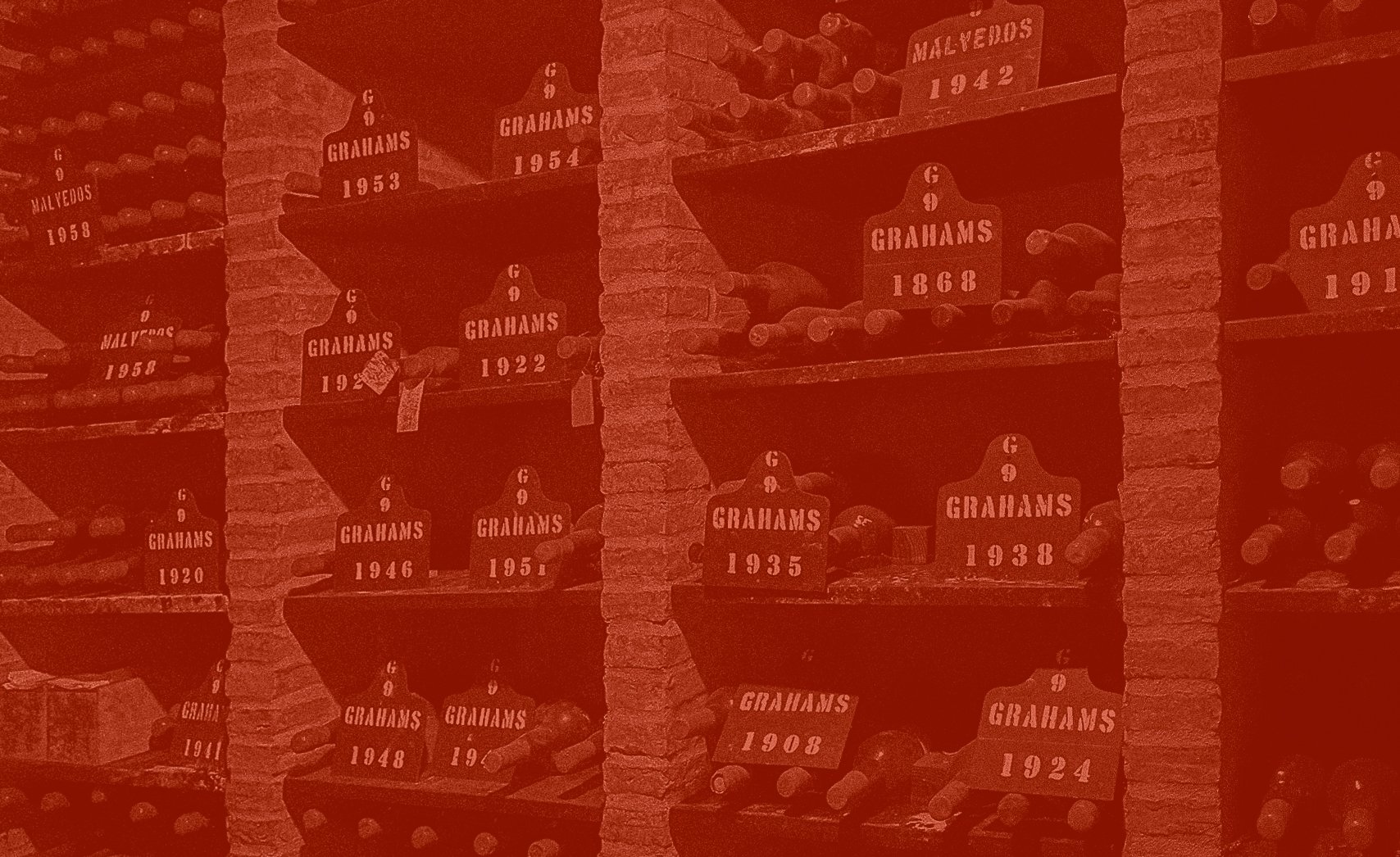
Vintage port - single Quinta vintage port
Vintage and Single Quinta Vintage Ports are among the most prestigious styles of Port, made exclusively from the best grapes of a single, exceptional harvest. Vintage Ports blend the finest lots from various vineyards, while Single Quinta Vintage Ports express the unique character of a single estate or 'Quinta'. Both styles are known for their depth, complexity, and extraordinary longevity, often improving for several decades in the bottle.
Vintage Port. The Apex of Port Wine Artistry
Vintage Port is the pinnacle of Port wine, representing the ultimate expression of a single, exceptional year in the Douro Valley. This style traces its history back to the 18th century when the finest lots of wine from a single harvest were set aside to age in bottle, maturing into wines of unrivaled depth and complexity. Over the centuries, Vintage Port has gained an esteemed reputation, representing a mere 2% of all Port production.
Characteristics of Vintage Port
Vintage Port stands out for its impressive concentration, depth of flavor, and extraordinary aging potential. Made only in years when conditions in the vineyards are ideal, this style offers a true snapshot of a moment in time.
On the palate, Vintage Port delivers a symphony of opulent fruit flavors, from ripe blackberries and plums to subtler notes of spice, chocolate, and licorice, unfolding in layers as the wine matures. Its formidable structure, powerful tannins, and vibrant acidity ensure that a well-made Vintage Port can age and evolve for several decades, even a century or more, in the bottle.
Vintage Port is made from the finest grapes, typically a blend of indigenous varieties such as Touriga Nacional, Touriga Franca, Tinta Roriz, and Tinta Barroca. The grapes are traditionally foot-trodden in stone lagares to gently extract color, tannins, and flavors.
Following fermentation, the process is halted by the addition of grape spirit, preserving the natural sweetness of the wine and boosting the alcohol level, usually to around 20% ABV. The wine is then aged for around two years in oak vats before being bottled unfiltered.
The sweetness of Vintage Port can vary, but typically falls in the range of 90-110 grams of sugar per liter.
Pruning Methods and Viticulture
The vineyards in the Douro Valley are some of the most challenging to cultivate in the world. The steep, terraced slopes demand meticulous hand-harvesting and pruning. Depending on the specific needs of the vineyard, the vines may be pruned using a single or double guyot system, or trained along traditional low trellises known as "ramadas."
The Tradition of Port Tongs
For older bottles of Vintage Port, which often have fragile corks, the traditional method of opening involves using Port tongs. The tongs are heated until red-hot and then applied to the neck of the bottle. A cold cloth is then wrapped around the heated section, causing the glass to break cleanly. This method ensures the cork remains undisturbed, preserving the aged wine within.
Classic Vintage Years and Notable Producers
While the decision to declare a vintage rests with each individual house, certain years like 1994, 2000, 2003, 2007, 2011, and 2016 have seen widespread declarations and produced outstanding Vintage Ports.
Among the most revered producers of Vintage Port are names like Taylor's, Fonseca, Graham's, Quinta do Noval, and Dow's, houses known for their commitment to quality and their impressive track records of extraordinary Vintage Ports.
-
A 10-year-old Tawny Port boasts a unique and attractive color that speaks volumes about its aging process. Its hue falls somewhere between a radiant amber and a rich russet. This is a result of the extended maturation period in oak casks, during which the wine's deep red color gradually fades and takes on a more golden-brown tint. As light refracts through the wine, it brings to life a mesmerizing array of tones from deep gold to reddish-brown. The color's depth and intensity are indicative of the wine's age and quality. The clarity is exceptional, and a swirl in the glass leaves behind a slow, glycerin-like 'tear' or 'leg' that slowly descends the inner surface, hinting at the wine's richness and sweetness.
-
The resulting 10-year-old Tawny Port is a wine of medium body and richness. It offers a bouquet of dried fruits, caramel, honey, and nuts, complimented by a palate that's delicately balanced between sweetness and acidity. Its finish is typically long, allowing the complex flavors to linger in the mouth.
-
Touriga Franca, Touriga Nacional, Tinta Roriz, Tinta Barroca, and Tinto Cão
-
The intense, complex flavors of Vintage Port pair excellently with rich, flavorful cheeses like Stilton or Roquefort. It's also a sublime match for dark chocolate desserts, or can be enjoyed on its own as a meditative, after-dinner drink.
-
19-21%
-
Unlike Vintage Port, Tawny Port is filtered and fined before bottling, which means there's no sediment. You can store it upright without any negative effects. Keeping it upright also minimizes the surface area exposed to air in a partially consumed bottle, slowing down the oxidation process.
The ideal storage temperature for Tawny Port is between 55°F and 68°F (13°C - 20°C). It's essential to avoid drastic temperature fluctuations, which could spoil the wine.
Keep your Tawny Port in a dark place, as light, particularly sunlight, can degrade the wine over time. Also, avoid storing the wine in areas with high vibration, as this can disturb the aging process.
After Opening: Once opened, a 10-year-old Tawny Port will last for several weeks, even up to a couple of months, due to its aging process. It should be stored in the fridge after opening to maintain its quality. Be sure to reseal the bottle tightly after each use.

